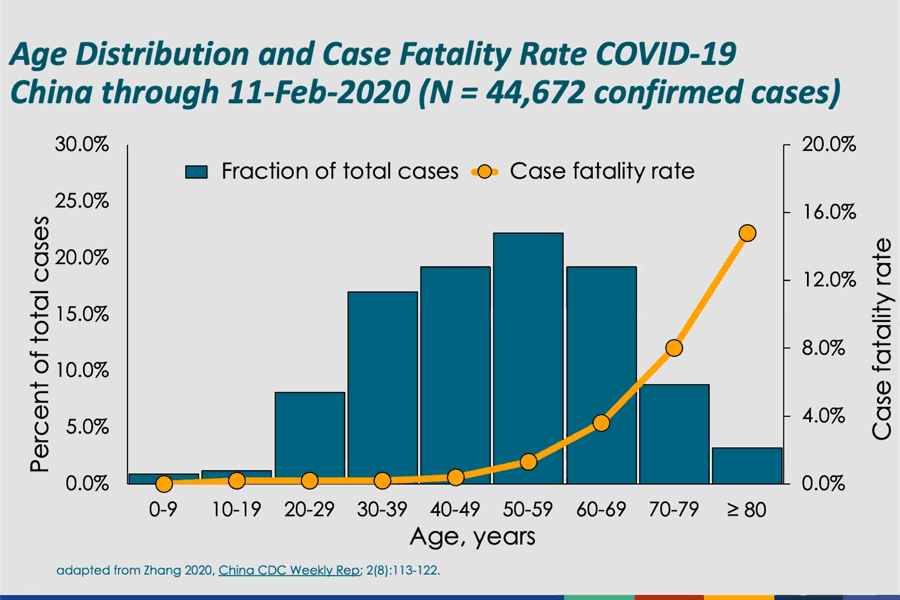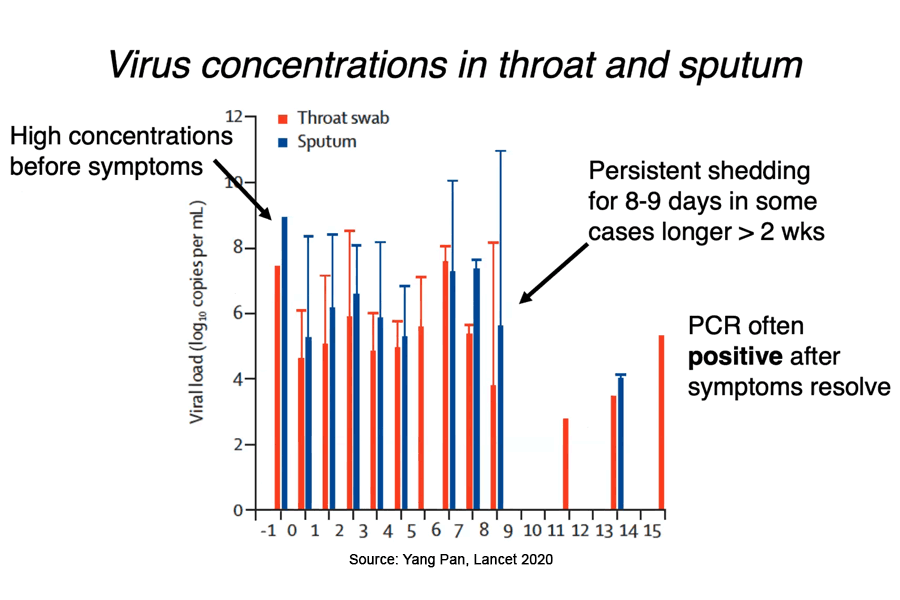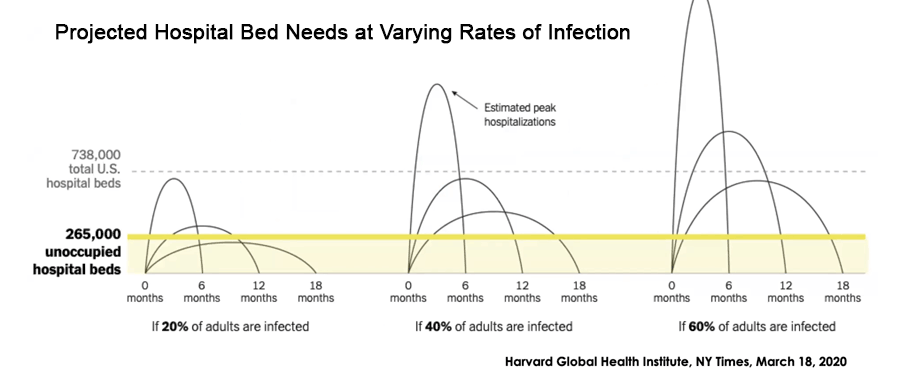As an alumnus of UC San Diego, I’ve had the privilege of attending two webinars recently on the coronavirus pandemic courtesy of Dr. Robert “Chip” Schooley, a professor and researcher at the UCSD Medical School. I’ve also checked out a couple of articles that inform my current perspective. Here’s what I discovered.
The Chinese Health Ministry has shared data regarding infection rates and disease severity. Risk factors for morbidity include older age, hypertension, chronic lung disease, diabetes, and obesity. Researchers are evaluating the degree to which drugs used to treat these conditions might have an impact on the presentation of the disease.
While this chart is instructive, the US experience may deviate given differences in general health and lifestyles between the populations. Morbidity may also be affected by access to healthcare facilities for the gravely ill.
The disease takes root initially in the lungs. It takes awhile before viral agents manifest in the nasal and pharyngeal cavities, the sites where current tests check for infection. As such, a person could test negative for COVID-19 simply because the virus has not yet migrated to the upper respiratory tract.
Viral shedding begins 2 or more days before symptoms appear and persists throughout the course of the disease (see below). Widespread testing in Iceland revealed that half of the persons infected with COVID-19 did not manifest symptoms whatsoever. Bottom line: You, your friends, family members, co-workers, et al may feel fine yet you could still be carriers of the disease and infect others. Keep your distance and wear personal protective equipment!
This unfortunate reality plagued a 120-voice community choir at its final rehearsal on March 10, 2020. Sixty choristers showed up for practice, none of whom had the slightest indication of illness. Chairs were set apart widely to give each singer ample breathing room. No one touched or hugged other members. Yet 45 attendees took ill, 27 tested positive for COVID-19, and two died from complications related to the disease.
You don’t have to be in close contact with an infected party to contract the virus. The virus can survive in aerosol form (i.e., suspended in the air) for upwards of 2 hours. It can also remain viable on inanimate objects for hours to days after deposit from a human host. If someone else touches the infected surface and then touches his or her face, the virus can establish itself in the new host. Word to the Wise: Wash your hands vigorously immediately after contact with a suspect object. Disinfect surfaces. Don’t touch your face!
Most states have placed restrictions on its citizens’ movements, closed non-essential business establishments, and denied gatherings in excess of 10 people. They’ve asked folks to “shelter in place” to the maximum extent possible. They want to tamp down the spread of the disease and make sure that our health care systems can accommodate persons with severe viral symptoms. Here’s why:
I don’t know if we’ll be able to hold infection rates to 20% over an 18-month period, but our household will do its part to make that objective a reality.
Meanwhile, there are multiple immunology groups around the country working on vaccines as well as treatment options for those who become infected. UCSD is active in this pursuit. Moreover, the UCSD School of Engineering is exploring options for 3-D printing of face masks and the use of UV light to sterilize used masks. They are also looking at ways to speed the production of ventilators.
A return to normalcy rests in the hands of able scientists and researchers. As Dr. Schooley said: “The virus will continue to circulate unless we get a vaccine to get it under control.


